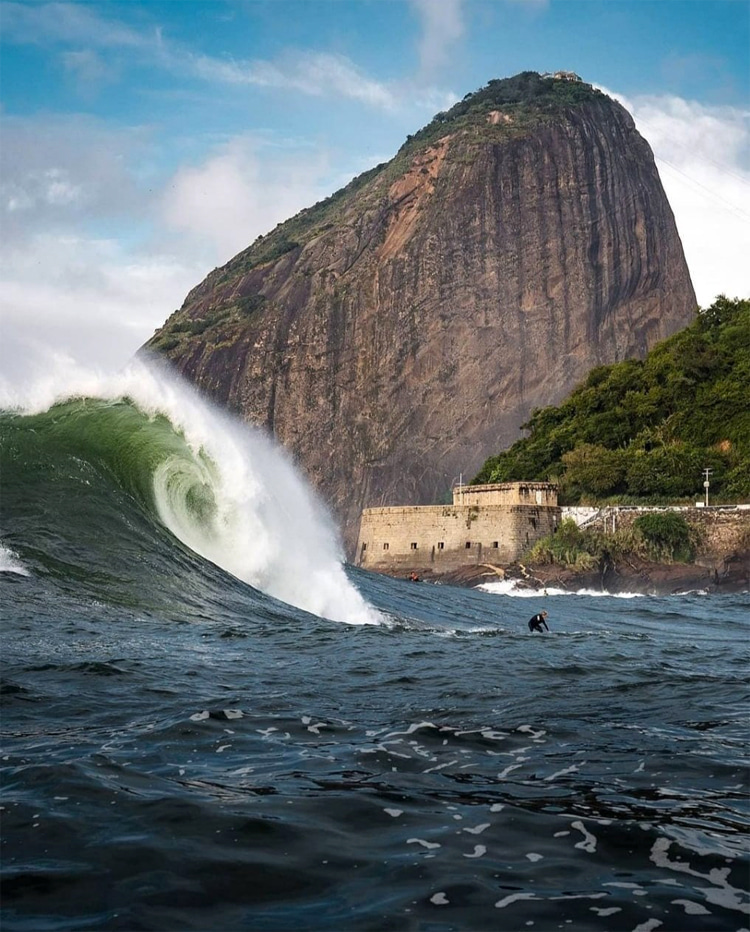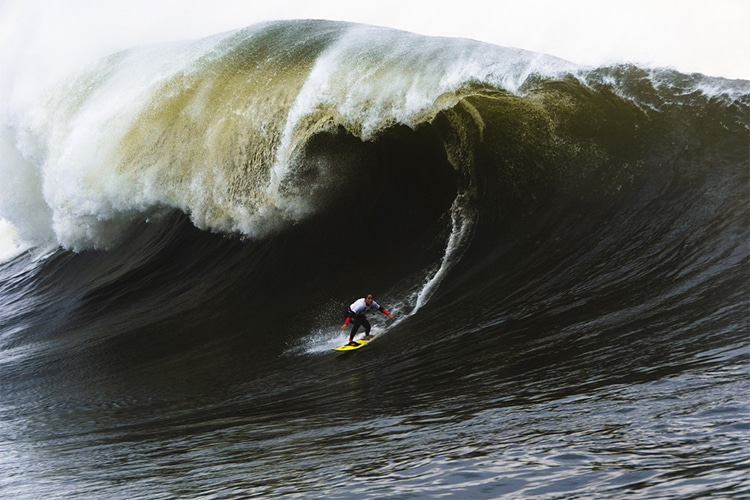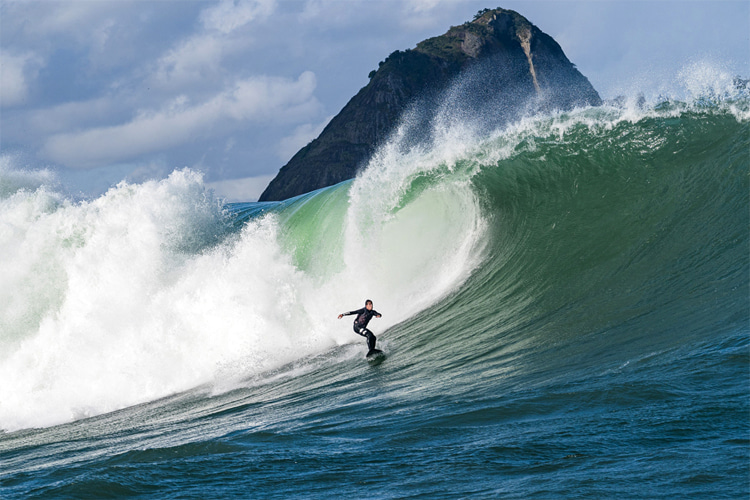Who would've imagined that a monster wave sometimes ignites the coastline of Rio de Janeiro? Meet Laje da Besta, a wave whose name speaks for itself.
It is one of the most dangerous waves in Brazil, and it occasionally breaks near the mouth of Guanabara Bay, near Sugarloaf Mountain.
Laje da Besta, or Slab of the Beast in English, is a thick and ruthless A-frame wave - a supernatural creation.
When it breaks, the Brazilian titan wave produces smaller ripples and currents, making it hard even for support boats and photographers to be in the surroundings.

Currents of Hell
So why does this happen in the "Marvellous City"? In fact, it's like a double-edged sword.
There are massive currents of water coming out of Guanabara Bay into the ocean, and then tidal currents coming in from the sea.
The push-and-pull effect forms these behemoth freaks of Nature.
Despite providing both left and right-hand barrels, the best performances and waves have been achieved and ridden on lefts.
The best angle and place to shoot the surfers put the athletes in action with the stunning Niteroi Mountains or Sugarloaf Mountain as background.
As with many treacherous waves, Laje da Besta is not as big as Nazaré or Jaws. Instead, it is wild and challenging, like Mavericks or Shipstern Bluff.

20-Foot Walls of Water
Rio de Janeiro's big wave surfing entertainment arena rarely comes to life.
Actually, many people had no idea that such a brutal wave existed next to one of the most crowded cities in Brazil.
It needs powerful E-SE swells to hit the local bathymetry perfectly, but when all variables align, local surfers are greeted with colossal walls of water.
The striking footage of Alemão de Maresias, Carlos Burle, Eric de Souza, Lucas Chianca, Lucas Medeiros, Michaela Fregonese, Michelle des Bouillons, and other big riders surfing three-story waves inside Guanabara Bay stirred the imagination of Brazilians.
Laje da Besta is a fickle and savage animal that can easily hit 15 and 20 feet in height.
Local wave riders spend months monitoring ocean and weather forecast websites and need to wait for the perfect storm capable of waking up Laje da Besta.
Bodyboarders, bodysurfers, skimboarders, and even outrigger canoeists have already tried their luck in the infamous Brazilian wave, some of them with great success.
For instance, finless board riding master and skimboarding world champion Lucas Fink ventured himself into the life-threatening, full-energy wave.

A Mix of Angle and Bathymetry
But how does precisely Laje da Besta form?
"First of all, the arrival of a cold front very close to the Rio de Janeiro coastline produces waves coming from south and southeast," explains David Zee, oceanographer e professor at Rio de Janeiro State University (UERJ).
"Then, the morphology of the Guanabara Bay mouth causes the wave to funnel, and a slab reduces depth in the area and helps shape it."
In conclusion, the swell angle is critical to getting the best conditions, i.e., epic sessions in which Laje da Best roars to life with all its fury and glory.
The mammoth wave spends most of the time in hibernation mode and requires tricky logistics to be tamed.
During the tide change, strong currents make it difficult to stay in the lineup and take-off zone and then surf it.
That's when you can feel the full force of the Guanabara Bay flow coming out towards the sea.
Brazil is also home to one of the world's most notorious deepwater slabs.
Avalanche is a mutant wave that breaks 280 miles (440 kilometers) northeast of Rio de Janeiro.
